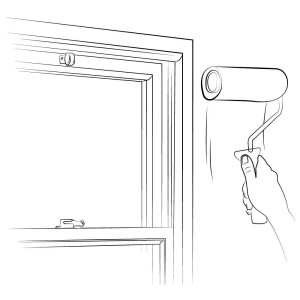All Categories
Featured
Table of Contents
How To Retrofit Your Windows With Double Glazing, And Keep ... in Karawara Western Australia
Laminated glass is often utilized in locations in the home most susceptible to injury from human effect such as restrooms, doors, around staircases and in locations near the floor (it satisfies the requirements of 'shatterproof glass' that is mandated for use in these areas by Australian Standard AS 1288 Glass in buildings).
Toughened glass has been 'tempered' by being reheated and rapidly cooled again. This procedure makes it much stronger than standard glass it can resist greater impact loads prior to breaking. It likewise makes it much safer due to the fact that, when it does shatter, it breaks into lots of little cubic pieces instead of dangerous fragments.
Plastic Window Frames - Best Plastic Double Glazed ... in Lockridge WA
However, toughened glass has no thermal or acoustic advantages over other glass of the same toning or density. Secondary glazing is where single-glazed windows are retrofitted with a transparent acrylic or glass sheet connected to the within the frame or openable sash with a secondary frame or with magnetic strips.


Secondary glazing will not perform also thermally as a manufactured IGU, considering that it is impossible to totally seal the perimeter, but it can supply good noise control. Window films are a thin polymer movie including a soaking up color or reflective metal layer, with an adhesive support. They stay with your glazing to alter its colour or make it reflective.
Double Glazed Windows In Melbourne in Dalkeith Perth
Applied to existing glass, some window films can halve the overall SHGC of the window by soaking up and/or reflecting solar radiation. This can be especially advantageous in hotter climates where cooling is the main issue, or on east and west elevations straight exposed to long durations of sunshine. Window films might also lower visible light transmittance.

For this reason, it is usually best to use a certified installer of window film. Frames have a significant effect on the thermal performance of doors and windows, since energy can be gained and lost through the frame, in addition to through the glass. Different types of frame will allow various levels of heat gain and loss, so cautious choice of frame is very important for efficient passive design.
Double Glazing Vs Triple Glazing For Windows (2023) in South Fremantle Perth
Aluminium is also a very excellent conductor of heat and will decrease the insulating value of a glazing system, unless particularly engineered to decrease this. A 'thermally broken' frame is comprised of 2 aluminium areas linked by a structural insulator (normally a low-conductivity structural polymer). This 'breaks' the thermal connection through the aluminium and minimizes the heat flowing through the frame.
Wood frames are an excellent natural insulator that can match some house styles. Timber frames ought to be made from species that have naturally high resilience or be treated to prevent decay and contortion.
Why Install Stunning Double Glazing Windows During Summer? in Greenwood Western Australia
(weather condition removing) is installed.
u, PVC doors and windows have excellent thermal performance Image: Ben Wrigley (Light House Architecture and Science) Composite frames utilize aluminium profiles on the external sections with either a timber or u, PVC inner section. These integrate the low maintenance and toughness of aluminium with much enhanced thermal performance.
Table of Contents
Latest Posts
The Surprising Benefits Of Double Glazing In The Summer ... in Dalkeith Western Australia
Why Install Stunning Double Glazing Windows During Summer? in Glendalough WA
Double Glazing Windows in Osborne Park Perth
More
Latest Posts
The Surprising Benefits Of Double Glazing In The Summer ... in Dalkeith Western Australia
Why Install Stunning Double Glazing Windows During Summer? in Glendalough WA
Double Glazing Windows in Osborne Park Perth